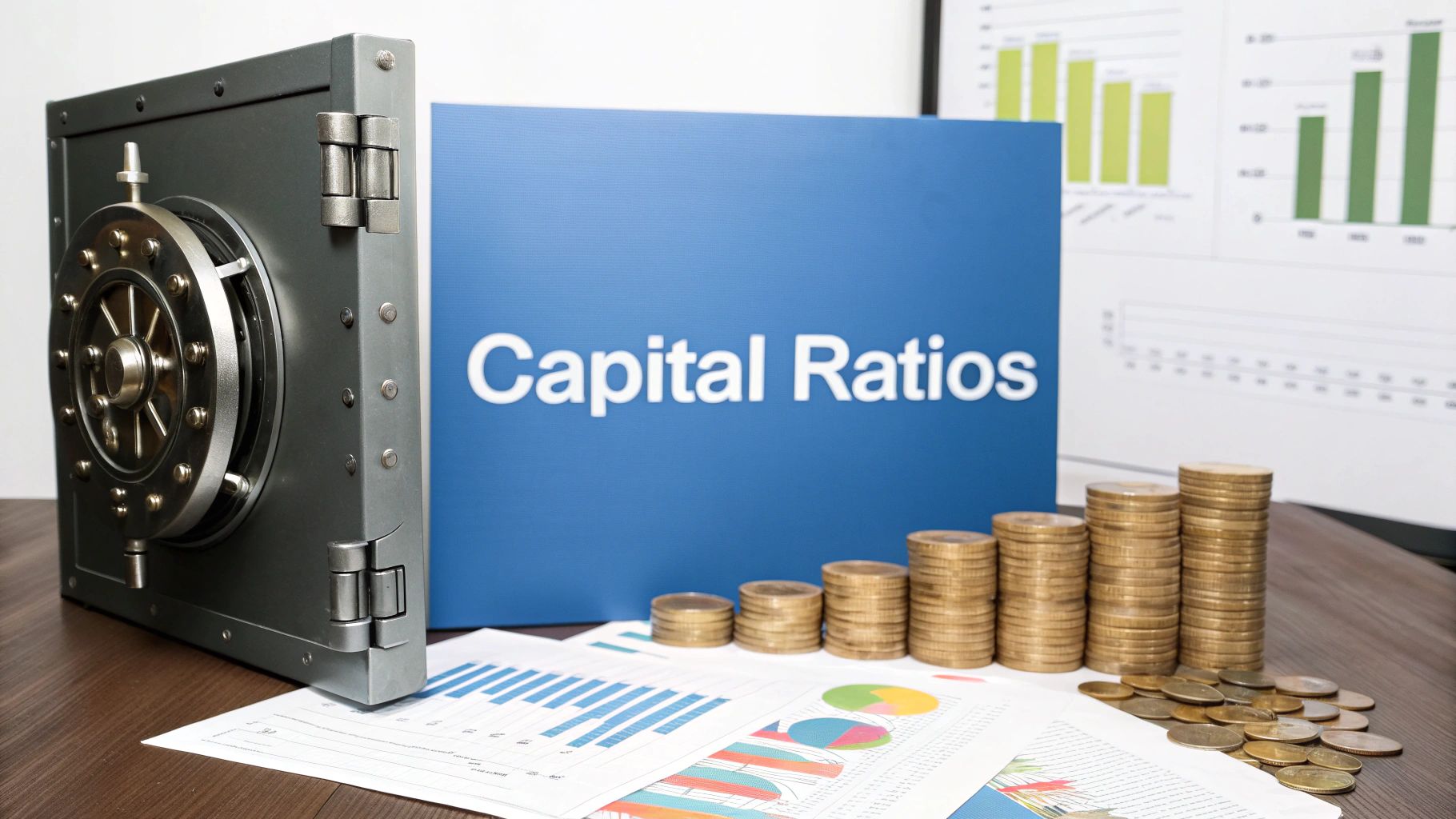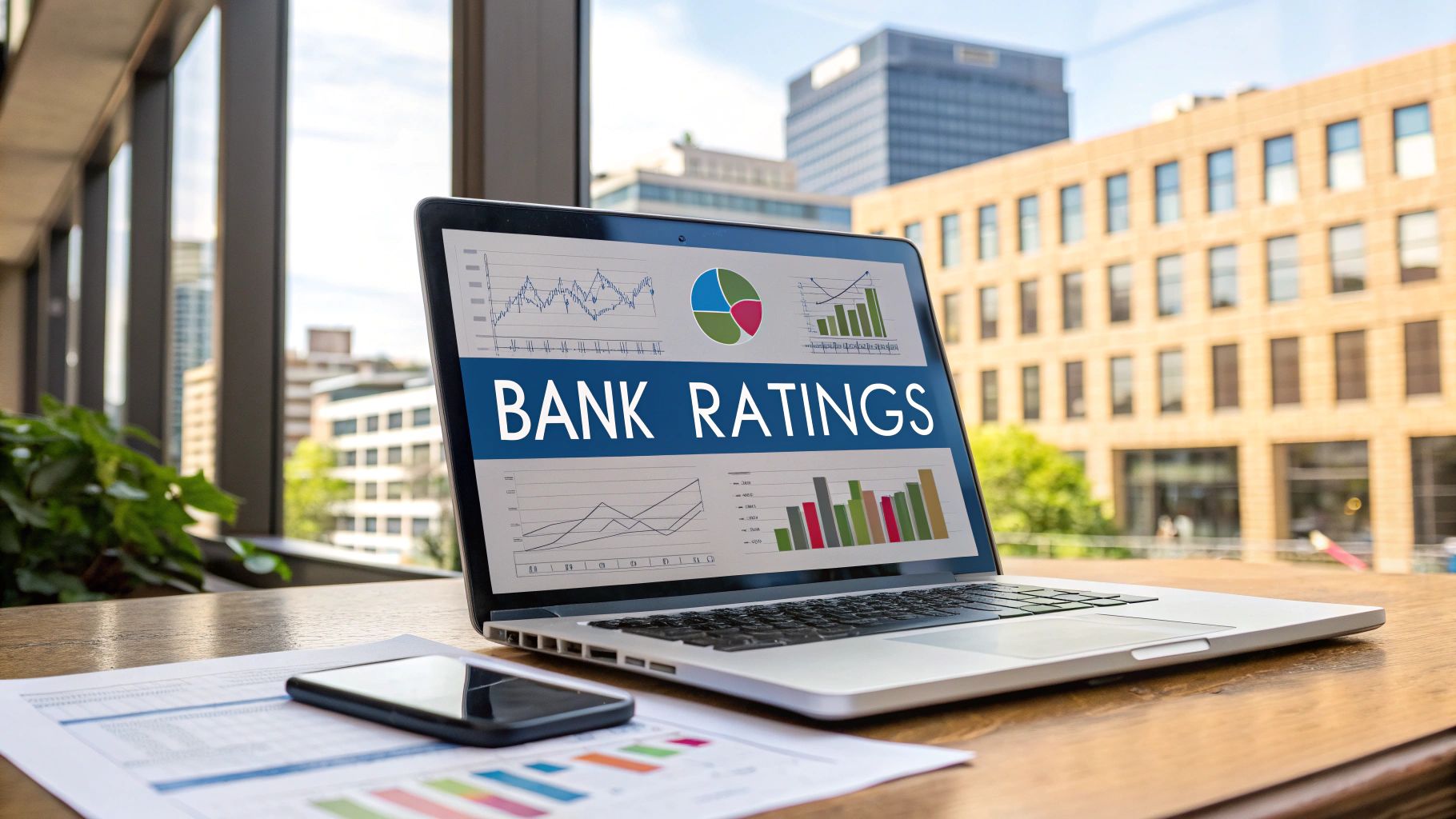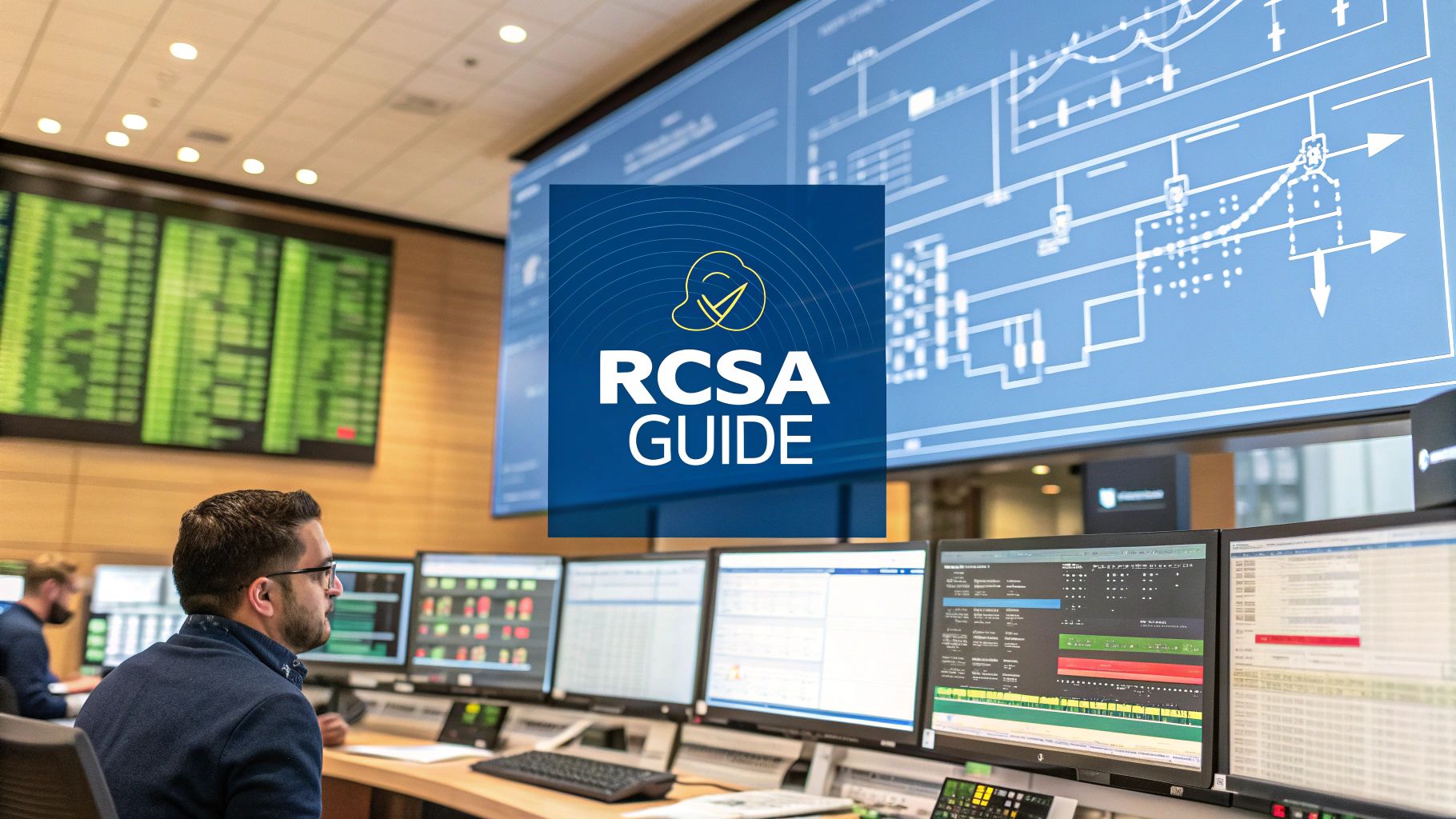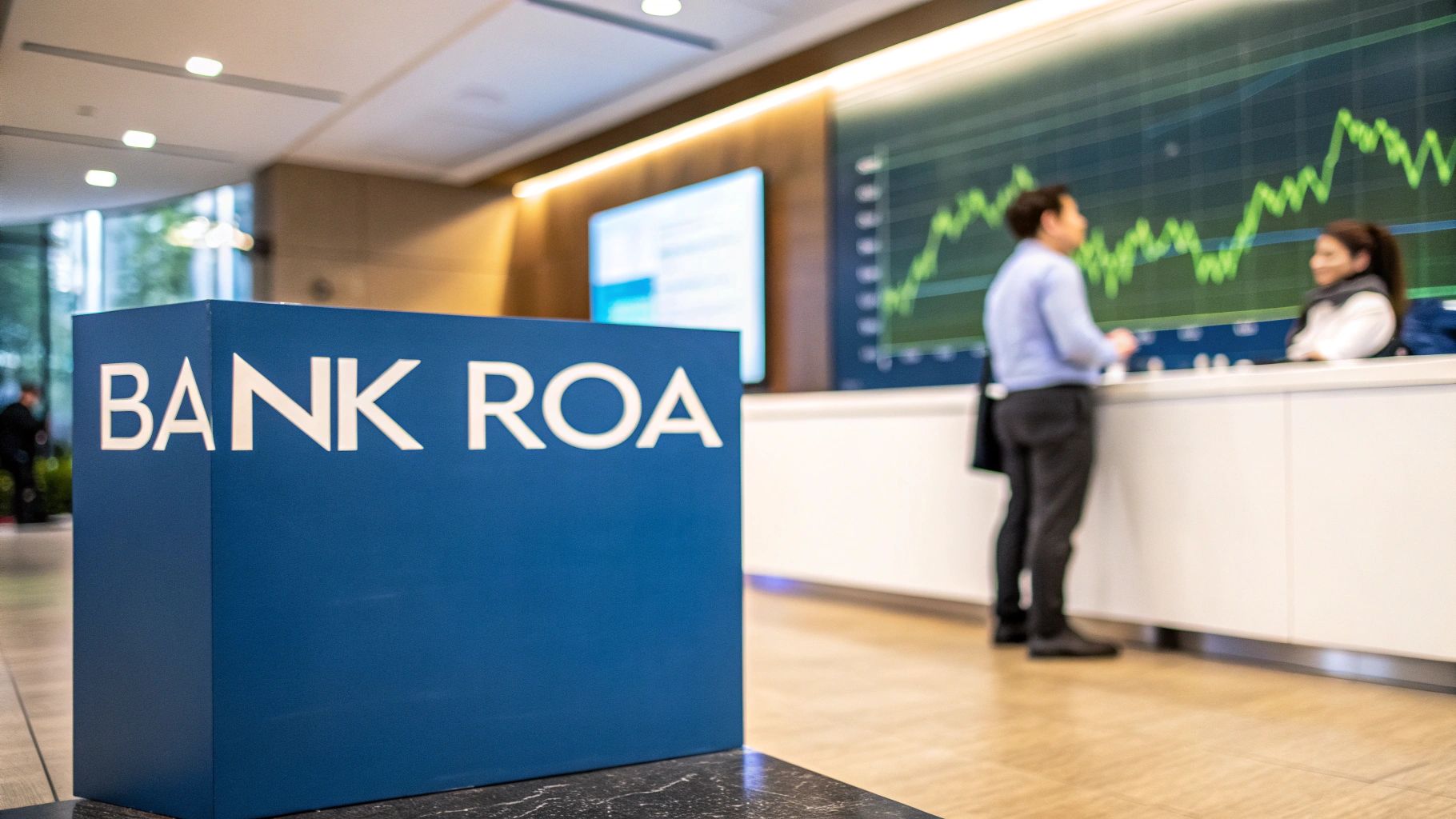← Back to News
What is a good Tier 1 capital ratio?
Banking Knowledge Base10/13/2024Banking Knowledge Basebank financial strengthBanking regulationsBasel III compliancecapital adequacy

Table of Contents
- Understanding the Tier 1 Capital Ratio Formula
- Differentiating Between Tier 1 and Tier 2 Capital in Adequacy Ratios
- Exploring the Relationship Between CET1 Ratio and Tier 1 Ratio
- The Significance of a High Tier 1 Capital Ratio
- Defining the Core Tier 1 Capital Ratio
- Assessing What Constitutes a Good Common Equity Tier 1 Ratio
- Minimum Requirements for Tier 1 Capital Ratio
- Evaluating a Good Tier 1 Capital Ratio for Banks
- An Overview of Total Capital Ratio and Its Components
- Explaining Tier 2 Capital Ratio and Its Impact
- Breaking Down the Components of Tier 1 Capital
- Practical Examples of Tier 1 and Tier 2 Capital
- Understanding Additional Tier 1 Capital in Banking
Understanding the Tier 1 Capital Ratio Formula
The Tier 1 Capital Ratio is a critical measure of a bank's financial strength. It is calculated by dividing the bank's core capital, known as Tier 1 capital, by its risk-weighted assets (RWA). The formula is:Tier 1 Capital Ratio = (Tier 1 Capital / Risk-Weighted Assets) x 100Differentiating Between Tier 1 and Tier 2 Capital in Adequacy Ratios
Tier 1 and Tier 2 capital are integral components of a bank's capital, each playing distinct roles in financial stability. Tier 1 capital, often referred to as core capital, primarily includes equity capital and disclosed reserves. It is intended to absorb losses without a bank being required to cease trading. Conversely, Tier 2 capital, or supplementary capital, includes subordinated debt, hybrid instruments, and other undisclosed reserves. It provides a cushion for additional security but is not as reliable as Tier 1 during downturns. Together, Tier 1 and Tier 2 capital form the bank's total capital, crucial for calculating capital adequacy.Exploring the Relationship Between CET1 Ratio and Tier 1 Ratio
The Common Equity Tier 1 (CET1) Ratio represents a significant part of the Tier 1 Capital Ratio. CET1 includes common shares and retained earnings, providing an accurate measure of a bank's core equity strength. The CET1 Ratio is calculated as a portion of the Tier 1 capital ratio, reflecting the most secure and readily available capital. A strong CET1 ratio enhances a bank's Tier 1 capital standing by ensuring that the most reliable equity forms the foundation of its financial structure, supporting the bank in stress scenarios.The Significance of a High Tier 1 Capital Ratio
A high Tier 1 Capital Ratio signifies robust financial health and stability. It indicates a bank's resilient capital base, capable of absorbing losses and providing a buffer against economic adversities. Regulatory bodies often set minimum Tier 1 requirements to prevent banks from facing insolvency during financial stress. A high ratio not only fulfills these regulatory demands but also instills confidence among investors and customers, further enhancing the institution's reputation.Defining the Core Tier 1 Capital Ratio
The Core Tier 1 Capital Ratio focuses exclusively on a bank's common equity, such as ordinary shares and retained earnings, excluding more volatile elements like revaluation reserves. By isolating core elements, this ratio provides a clear picture of a bank's genuine financial strength and ability to withstand operational and systematic shocks. It serves as a critical benchmark in evaluating the intrinsic quality and sustainability of a bank's capital resources.Assessing What Constitutes a Good Common Equity Tier 1 Ratio
A 'good' Common Equity Tier 1 Ratio is often benchmarked against regulatory requirements and industry norms. Ideally, a CET1 ratio above 6% is considered robust, as it exceeds the minimum regulatory threshold under Basel III standards. Banks with higher CET1 ratios signal enhanced resilience and capability to withstand adverse financial conditions, minimizing the risk of failure and fostering market confidence.Minimum Requirements for Tier 1 Capital Ratio
Regulatory authorities, influenced by international standards such as Basel III, establish minimum Tier 1 Capital Ratios to ensure a solid banking system. Typically, regulations mandate a minimum Tier 1 Capital Ratio of 6%. This standard ensures that banks maintain a sufficient capital buffer to cover potential losses, thereby protecting depositors and maintaining systemic stability.Evaluating a Good Tier 1 Capital Ratio for Banks
A good Tier 1 Capital Ratio is one that exceeds the required minimum. It reflects a bank's solid financial footing and its ability to endure financial shocks. Banks with a Tier 1 Capital Ratio in the range of 10% to 12% or higher are regarded as strong, suggesting a significant capacity to cover unexpected financial challenges without resorting to asset liquidation.An Overview of Total Capital Ratio and Its Components
The Total Capital Ratio encompasses both Tier 1 and Tier 2 capital, providing a comprehensive measure of a bank’s capital position in relation to its risk-weighted assets. Total Capital Ratio is calculated as:Total Capital Ratio = ((Tier 1 Capital + Tier 2 Capital) / Risk-Weighted Assets) x 100Explaining Tier 2 Capital Ratio and Its Impact
Tier 2 Capital Ratio assesses the supplementary capital resources provided by subordinated instruments and reserves. Although less reliable than Tier 1 capital in stress situations, Tier 2 capital is essential for a comprehensive risk mitigation strategy, bolstering a bank's buffer against potential losses. The Tier 2 Capital Ratio forms part of the total capital analysis, extending a bank's financial stability and ensuring a better hedge against long-term risks.Breaking Down the Components of Tier 1 Capital
Tier 1 Capital consists of core equity elements crucial for a bank's financial architecture. It includes:- Common Equity Tier 1 Capital (CET1): Common shares, retained earnings.
- Additional Tier 1 Capital: Other non-cumulative preferred stock, certain hybrid securities.
Practical Examples of Tier 1 and Tier 2 Capital
Let's consider a bank with the following components: Tier 1 Capital: $50 million in common stock, $30 million in retained earnings, and $10 million in preferred shares. Tier 2 Capital: $20 million in subordinated debt and $5 million in hybrid instruments. Combining these, the bank's total capital offers a complete cushion against losses and demonstrates tangible capital adequacy.Understanding Additional Tier 1 Capital Ratio in Banking
Additional Tier 1 (AT1) Capital comprises non-cumulative preferred shares and certain hybrid securities that provide extra capital support beyond the common equity backbone. AT1 instruments often come with unique features, such as conversion to equity or write-down mechanisms during distress, thereby enhancing the bank's crisis absorbency and financial robustness. To explore these concepts further, visit Visbanking's bank call reports for detailed data insights and pricing information.Frequently Asked Questions about Tier 1 Capital Ratios
What is the Tier 1 Capital Ratio, and why is it important?
The Tier 1 Capital Ratio is a measure of a bank's core financial strength, calculated by dividing its Tier 1 capital (core capital) by risk-weighted assets. This ratio is crucial as it assesses the bank's ability to absorb losses and remain operational under financial stress. It forms the foundation of regulatory capital requirements and ensures a bank's resilience.How do Tier 1 and Tier 2 Capital differ?
Tier 1 Capital, or core capital, includes common equity and disclosed reserves, designed to absorb losses while allowing the bank to continue operating. Tier 2 Capital, or supplementary capital, includes subordinated debt and hybrid instruments, acting as a secondary buffer but is less reliable during financial downturns. Together, they compose a bank's total capital.Why is a high Tier 1 Capital Ratio significant for banks?
A high Tier 1 Capital Ratio signifies a bank's robust financial health, capable of absorbing losses and providing a buffer against financial adversities. It meets regulatory requirements, enhances investor and customer confidence, and strengthens the bank's reputation by demonstrating stability and resilience.What constitutes a 'good' Common Equity Tier 1 (CET1) Ratio?
A 'good' Common Equity Tier 1 (CET1) Ratio typically exceeds regulatory requirements and industry standards, usually above 6% under Basel III. Higher CET1 ratios indicate a bank's enhanced capability to withstand adverse conditions, thereby reducing the risk of failure and maintaining market confidence.What is the minimum Tier 1 Capital Ratio requirement for banks?
The minimum Tier 1 Capital Ratio requirement, influenced by international standards like Basel III, is typically set at 6%. This ensures banks maintain a sufficient capital buffer to cover potential losses, protecting depositors and preserving systemic stability within the banking sector.Similar Articles

Brian's Banking Blog
A Guide to Capital Ratios for Banks: Beyond Compliance to Strategic Advantage

Brian's Banking Blog
Loan to Deposit Ratio Definition: A Strategic Guide for Bank Executives

Brian's Banking Blog
Mastering The Banking Efficiency Ratio: A Guide for Bank Executives

Brian's Banking Blog
Decoding the Bank Rating System: A Guide for Executive Leadership

Brian's Banking Blog
Mastering the Non Performing Loans Ratio for Strategic Advantage

Brian's Banking Blog
Mastering Banking Performance Metrics: A Guide for Executives

Brian's Banking Blog
A Guide to Risk and Control Self Assessment

Brian's Banking Blog
Return on Assets for Banks: A Guide for Executive Decision-Making

Brian's Banking Blog
A Guide to the Bank Leverage Ratio for Executives and Directors

Brian's Banking Blog